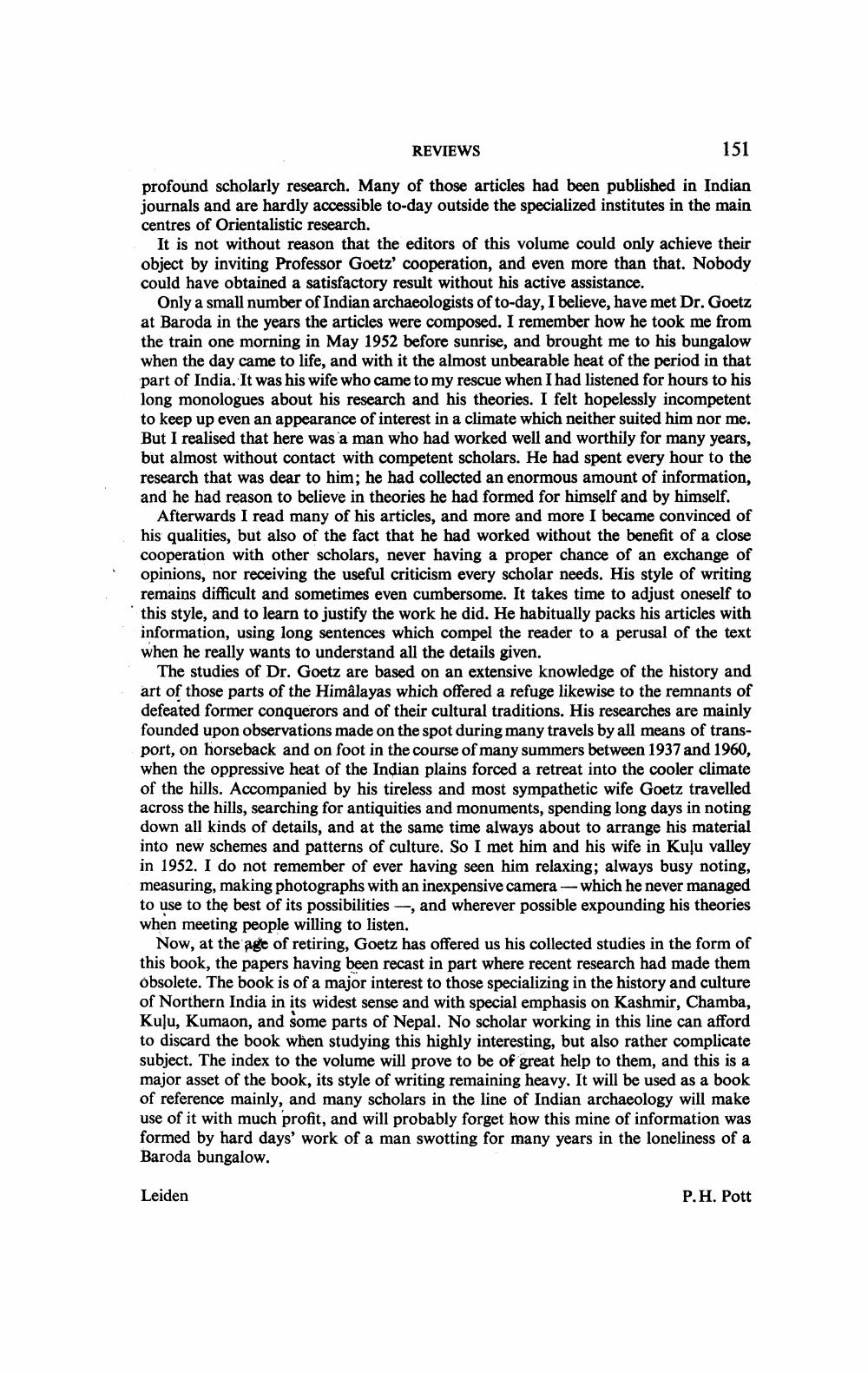________________ REVIEWS 151 profound scholarly research. Many of those articles had been published in Indian journals and are hardly accessible to-day outside the specialized institutes in the main centres of Orientalistic research. It is not without reason that the editors of this volume could only achieve their object by inviting Professor Goetz' cooperation, and even more than that. Nobody could have obtained a satisfactory result without his active assistance. Only a small number of Indian archaeologists of to-day, I believe, have met Dr. Goetz at Baroda in the years the articles were composed. I remember how he took me from the train one morning in May 1952 before sunrise, and brought me to his bungalow when the day came to life, and with it the almost unbearable heat of the period in that part of India. It was his wife who came to my rescue when I had listened for hours to his long monologues about his research and his theories. I felt hopelessly incompetent to keep up even an appearance of interest in a climate which neither suited him nor me. But I realised that here was a man who had worked well and worthily for many years, but almost without contact with competent scholars. He had spent every hour to the research that was dear to him; he had collected an enormous amount of information, and he had reason to believe in theories he had formed for himself and by himself. Afterwards I read many of his articles, and more and more I became convinced of his qualities, but also of the fact that he had worked without the benefit of a close cooperation with other scholars, never having a proper chance of an exchange of opinions, nor receiving the useful criticism every scholar needs. His style of writing remains difficult and sometimes even cumbersome. It takes time to adjust oneself to this style, and to learn to justify the work he did. He habitually packs his articles with information, using long sentences which compel the reader to a perusal of the text when he really wants to understand all the details given. The studies of Dr. Goetz are based on an extensive knowledge of the history and art of those parts of the Himalayas which offered a refuge likewise to the remnants of defeated former conquerors and of their cultural traditions. His researches are mainly founded upon observations made on the spot during many travels by all means of transport, on horseback and on foot in the course of many summers between 1937 and 1960, when the oppressive heat of the Indian plains forced a retreat into the cooler climate of the hills. Accompanied by his tireless and most sympathetic wife Goetz travelled across the hills, searching for antiquities and monuments, spending long days in noting down all kinds of details, and at the same time always about to arrange his material into new schemes and patterns of culture. So I met him and his wife in Kulu valley in 1952. I do not remember of ever having seen him relaxing; always busy noting, measuring, making photographs with an inexpensive camera which he never managed to use to the best of its possibilities , and wherever possible expounding his theories when meeting people willing to listen. Now, at the age of retiring, Goetz has offered us his collected studies in the form of ok, the papers having been recast in part where recent research had made them obsolete. The book is of a major interest to those specializing in the history and culture of Northern India in its widest sense and with special emphasis on Kashmir, Chamba, Kulu, Kumaon, and some parts of Nepal. No scholar working in this line can afford to discard the book when studying this highly interesting, but also rather complicate subject. The index to the volume will prove to be of great help to them, and this is a major asset of the book, its style of writing remaining heavy. It will be used as a book of reference mainly, and many scholars in the line of Indian archaeology will make use of it with much profit, and will probably forget how this mine of information was formed by hard days' work of a man swotting for many years in the loneliness of a Baroda bungalow. Leiden P.H. Pott




